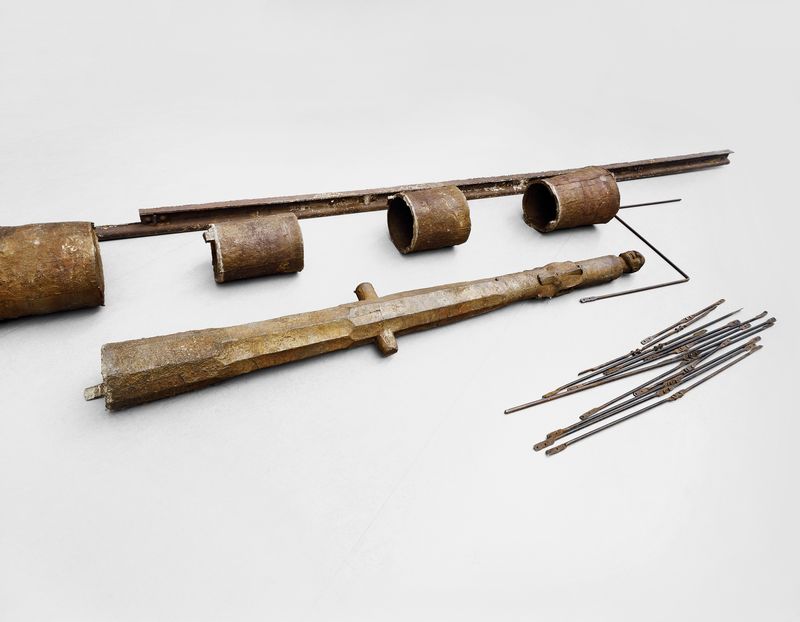Every person is an artist
For Jospeh Beuys, art and life are inextricably linked. His work is full of personal symbolism related to important life events, which he sometimes invents himself. He uses this personal aspect to create art with a social purpose: the pursuit of a society where there is room for warmth, tenderness and irrationality, in which every person is an artist. 
Memory
Strassenbahnhaltestelle (1976) recalls a memory from Beuys’ childhood in Kleve. The installation is composed of a tram rail and casts of Der Eiserner Mann (1653). This is a monument commemorating the Eighty Years’ War, which was destroyed by Napoleon’s troops in 1794. When Beuys sits next to these remains waiting for the tram after school, he experiences their penetrating power. He realises that ‘the whole world depends on the constellation of a few lumps of material’. This thought lays the foundation for his view that sculpture is a constantly changing and social process.
Beuys created this installation for the German pavilion of the Venice Biennale. The remains of the installation are ‘abgelegt’ in the Kröller-Müller Museum: laid down as if buried.
 Isolation
Isolation
Filzanzug (1970) refers to another life-changing event for Beuys from the Second World War, although this one was partly fabricated by him. After his fighter plane crashed in the Crimea in 1944, he supposedly owed his life to Tartars who wrapped him in fat and felt to restore his body heat. With this self-imagined legend he explains the frequent use of materials with ‘warm’ properties such as fat, felt and copper (flexibility, insulation, conduction) in his art. The felt suit modelled after his own costume refers to insulation or protection against what’s going on around us.
